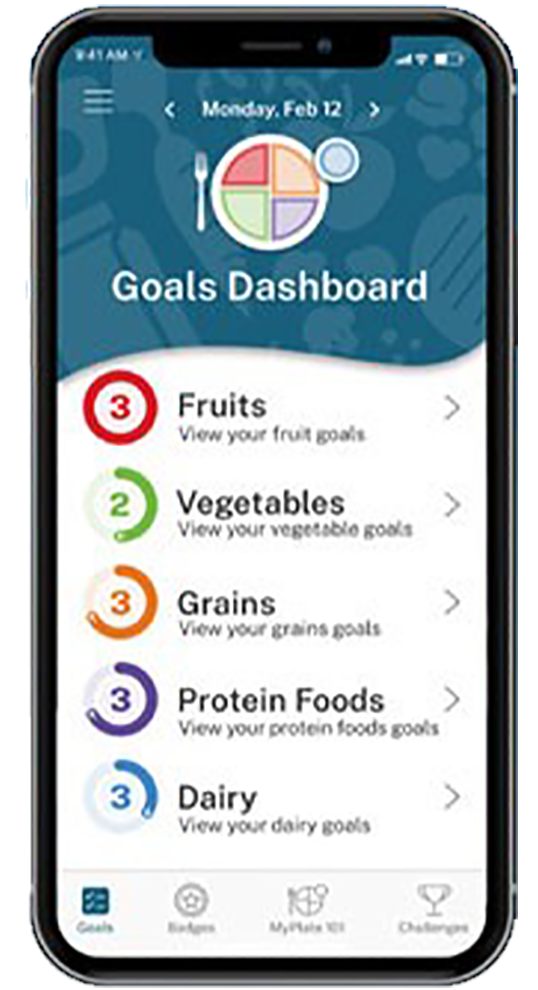Risk Factors
It is important to know that certain risk factors increase the possibility of developing colorectal cancer. While some risk factors can’t be changed, others can.

- Age
- Family/ personal history of colon cancer
- Polyps in the colon or rectum
- Inflammatory bowel disease (IBD)
- Familial Adenomatous Polyposis (FAP)
- Hereditary Non-Polyposis Colorectal Cancer (HNPCC, also known as Lynch Syndrome)

- Alcohol consumption
- Tobacco use
- Sedentary lifestyle
- Diet high in red meat
- Low fiber and vegetable intake
Colorectal cancer risk increases with age. This does not mean only older people are diagnosed with colorectal cancer. In the United States, colorectal cancer is on the rise in younger adults under the age of 45. So, regardless of age, any risk factors you may have identified should be reported to your doctor. This can help identify when screening should begin and the most appropriate screening test.
Early Onset Colorectal Cancer (EOCRC) is on the rise! "People born in 1990,... have double the risk of colon cancer and quadruple the risk of rectal cancer... ", R. Siegel
When should screening begin?
The Colorectal Cancer Prevention Network recommends you begin discussing your risk with your doctor at age 18. About 1 in 3 people who are diagnosed with colorectal cancer have family history of the disease. You should talk with your family members about their medical and cancer history including their results of their colorectal cancer screening. Follow up every year as their health information may change.
Brief Colorectal Cancer Risk Assessment
Review the following 4 questions and share the answers with your doctor. Answering “yes” to any of the 4 questions changes your options for colorectal cancer screening. Yearly, review your personal and family health and medical history. Be sure to report any changes to your doctor.
Question 1: Do you have at least one family member diagnosed with colorectal cancer (CRC) or adenomatous polyps?
Question 2: Have you experienced rectal bleeding, noticed blood in your stool, or any other CRC related symptoms?
Question 3: Do you have a history of pre-cancerous polyps from a prior colonoscopy?
Question 4: Have you ever had a positive take home stool test?
Disclaimer: These questions were developed by the Colorectal Cancer Prevention Network based upon peer review of scientific journals. The questions are designed to provide a simple tool to medical staff and patients alike to facilitate related CRC risk assessment and determining the appropriate CRC screening modality. These questions may not consider all increased and high-risk criteria and may not reflect guidelines published after the date of this publication (January 2022).
What is your risk?
Below are risk categories based on personal and family health. It is recommended you speak with your doctor to complete a full risk assessment.
- No signs or symptoms
- No personal history of colorectal cancer or pre-cancerous polyps
- No family history of colorectal cancer or pre-cancerous polyps
- Personal history of colorectal cancer or pre-cancerous polyps
- Family history of colorectal cancer or pre-cancerous polyps
- Inflammatory bowel disease (Crohn's, Ulcerative Colitis)
- Suspected or confirmed genetic syndrome FAP and HNPCC (Lynch Syndrome) *The risk of developing colon cancer is estimated to be 100% for those with classic FAP and its subtypes.
Inflammatory bowel disease (IBD)
Certain inflammatory bowel diseases can also increase an individual’s risk for developing colorectal cancer. Those with Crohn’s Disease and Ulcerative Colitis have chronic inflammation in the gastrointestinal tract, including the colon, which can cause constant turnover of cells in the lining of the colon, thereby increasing the chances of developing cancer. This creates a higher risk for colorectal cancer, requiring vigilance about colon health and screenings. For more information contact the Crohns Colitis Foundation.
Familial adenomatous polyposis
Familial adenomatous polyposis (FAP) is an inherited disorder characterized by cancer of the large intestine (colon) and rectum. People with the classic type of FAP may begin to develop multiple polyps in the colon as early as their teenage years. In such cases, the colon must be removed, since these polyps can become cancerous. In people with classic FAP, the number of polyps increases with age, and hundreds to thousands of polyps can develop in the colon. For individuals with FAP, the average age at which they could develop colon cancer is 39 years.
HNPCC, also known as Lynch syndrome
Hereditary Non-Polyposis Colorectal Cancer (HNPCC), also known as Lynch syndrome, is the most common cause of hereditary colorectal cancer. People with Lynch syndrome are more likely to get colorectal cancer and other cancers, which can occur younger ages (i.e., before 45). The cancers associated with Lynch syndrome include:
- Uterine (endometrial)
- Stomach
- Liver
- Kidney
- Brain
- Certain types of skin cancers
Lynch syndrome causes about 4,000 colorectal cancers and 1,800 uterine (endometrial) cancers per year. It is important to talk with your family about cancer history and colorectal polyps as this will help your doctor determine when you should be screened and if genetic testing should be considered.
For information about genetic testing, visit the American Cancer Society and the National Society of Genetic Counselors.
Alcohol consumption
Drinking alcohol (beer, wine or liquor) increases your risk of developing cancer (breast, liver, colon, rectum, mouth, pharynx, larynx, and esophagus). Reducing alcohol use, may reduce your risk of developing cancer. For more information about the impact that alcohol has on cancer, visit the Center for Disease Control and Prevention website.
Tobacco use
The American Cancer Society has concluded that each year smoking causes about 1 out of 5 deaths in the US. Although smoking is a well-known cause of lung cancer, it is also linked to other cancers as well. People who have smoked tobacco for a long time are more likely than non-smokers to develop and die from colorectal cancer. Cigarettes, cigars, pipes, spit and other types of smokeless tobacco all cause cancer. There is no safe way to use tobacco.
I’m ready to quit!

Take smokefree.gov’s smoking habits quiz for a profile of your nicotine dependence and some ideas about how to tame your cravings as you become a non-smoker.
Help is a phone call away!
Call 1-800-QUIT-NOW (1-800-784-8669)

Quitlines help tobacco users quit, at no cost, through services that include individual counseling, information on how to quit, and referral to self-help materials and cessation medications.
Let the South Carolina Tobacco Quitline help you quit!
Help is a click away!

If you want to quit smoking, download the FREE quitSTART App from Google Play or the Apple Store. quitSTART takes the information about your smoking history and gives tailored tips, inspiration, and challenges to help you become smoke free and live a healthier life.
Visit the Centers for Disease Control and Prevention or smokefree.gov for additional resources to help you quit smoking.
Maintaining a healthy weight and regular physical exercise are important. The Centers for Disease Control and Prevention has indicated that people who are overweight and/or obese are at increased risk of developing some cancers (endometrial, breast, colorectal). People are considered overweight if their body mass index (BMI) is between 25 to 29, or obese if their BMI is higher than 30.

Calculate your BMI.
Being physically active not only helps you feel great, but it reduces your risk of colorectal cancer and other diseases.
Benefits of physical activity for adults
Evidence shows more active adult men and women:
- have lower rates of all-cause mortality, coronary heart disease, high blood pressure, stroke, type 2 diabetes, metabolic syndrome, colon and breast cancer, and depression;
- less likely to have a hip or vertebral fracture;
- exhibit a higher level of cardiorespiratory and muscular fitness; and
- more likely to achieve weight maintenance, have a healthier body mass and composition.

Physical Activity Recommendations from the Centers of Disease Control and Prevention

According to a study by the NIH, the risk of colon cancer decreased by 40% in the people exercising 7 hours a week. Make a plan to stay on track with an Activity Planner from the Department of Health and Human Services. Set your own weekly goals, choose the activity you want to do, and get personalized tips to help you stay motivated. When you’re done, print your plan or share it with friends and family.

Find local parks and recreation areas near you: https://www.sctrails.net/trails.
The American Cancer Society has concluded diets that are high in vegetables, fruits, and whole grains (and low in red and processed meats) have been linked to lower colorectal cancer risk.
Building a healthy eating plan
According to the Dietary Guidelines for Americans 2020–2025, a healthy eating plan:
- Emphasizes fruits, vegetables, whole grains, and fat-free or low-fat milk and milk products
- Includes lean meats, poultry, fish, beans, eggs, and nuts
- Is low in saturated fats, trans fats, cholesterol, salt (sodium), and added sugars
- Stays within your daily calorie needs
Set simple goals for healthy eating

The USDA Choose My Plate has tools to help keep you accountable. It’s FREE!
Meet healthy eating goals one at a time! Use the Start Simple with MyPlate App to pick simple daily food goals, see real-time progress, and earn badges along the way. This easy-to-use app can help you make positive changes. Healthy eating can help you achieve a healthier life overall. Get started with Start Simple with MyPlate!
Visit the SC Department of Agriculture to find local farmers markets: https://agriculture.sc.gov/where-to-buy-local/community-based-farmers-markets/.
The American Cancer Society states the best advice about diet and activity to possibly reduce the risk of colorectal cancer is to:
- Increase the intensity and amount of physical activity.
- Limit intake of red and processed meats.
- Get the recommended levels of calcium and vitamin D.
- Eat more vegetables and fruits.
- Avoid obesity and weight gain around the midsection.
- Avoid excess alcohol.